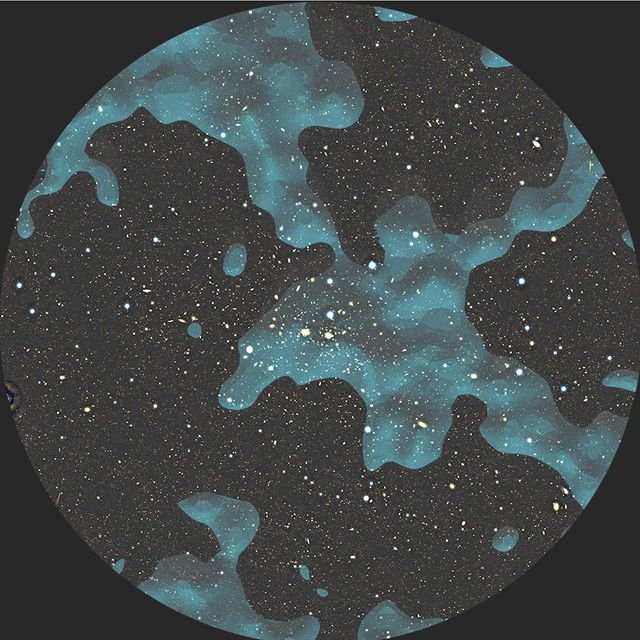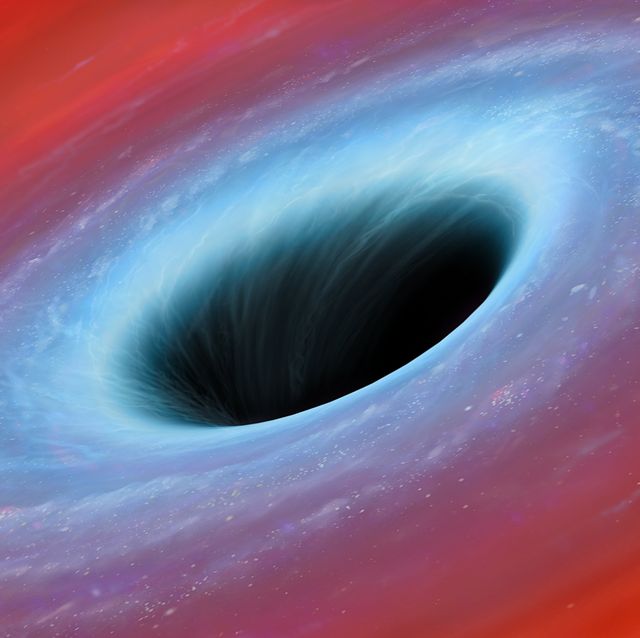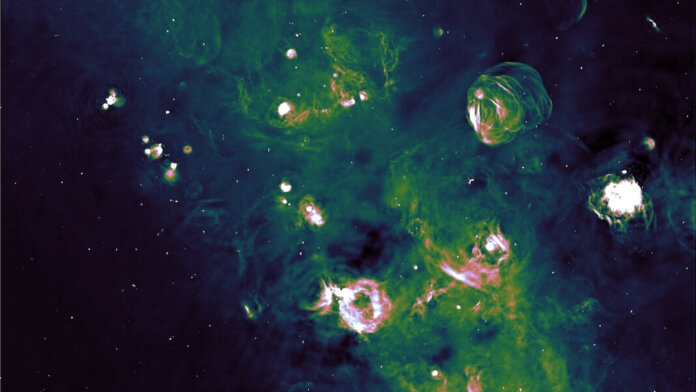The quasar—a glowing, active core of a galaxy—has a black hole at its center that consumes more than a sun’s-worth of mass each day
:focal(2093x1316:2094x1317)/https://tf-cmsv2-smithsonianmag-media.s3.amazonaws.com/filer_public/01/22/0122eed6-f4f1-41e4-bca4-5e359ed38826/eso2402a.jpg)
Astronomers have found the brightest known object in the universe—a glowing core of a galaxy, called a quasar, located 12 billion light-years away.
Quasars, as a whole, are the brightest objects in the cosmos, each consisting of a supermassive black hole that’s actively devouring an orbiting disc of gas and dust. But the black hole in this record-setting quasar is gobbling up more than a sun’s-worth of mass every day, making it the fastest growing black hole scientists have ever seen, according to a statement from the European Space Agency (ESA).
The gargantuan object stretches about seven light-years across, and it puts our sun’s luminosity to shame—the quasar shines more than 500 trillion times brighter than the star in our solar system, the researchers reported Monday in the journal Nature Astronomy.
“This quasar is the most violent place that we know in the universe,” Christian Wolf, lead author of the new study and an astrophysicist at Australian National University, tells Marcia Dunn of the Associated Press (AP).
“It is a surprise that it has remained unknown until today, when we already know about a million less impressive quasars,” study co-author Christopher Onken, an astronomer at Australian National University, says in the statement. “It has literally been staring us in the face until now.”
Supermassive black holes, which are at the heart of every quasar, grow by pulling stars and gas clouds into a ring of orbiting material called an accretion disc and swallowing them up. The matter circling the black hole rubs together, creating friction that releases glowing heat that can be seen from far away.
Researchers unknowingly spotted the ultra-bright quasar, officially called J059-4351, in images taken in 1980 by the Schmidt Southern Sky Survey, a telescope in Australia—but at first, they mistakenly identified it as a star. Typically, astronomers find quasars using machine-learning models trained to survey large areas of the sky for objects that look like known quasars in existing data. This makes it harder to spot unusually bright quasars that are unlike anything seen before.
But last year, the study authors determined the object was in fact a quasar using a telescope at the Siding Spring Observatory in Australia. They followed up with data from the Very Large Telescope in Chile to determine the quasar was the brightest ever seen.
“The exciting thing about this quasar is that it was hiding in plain sight and was misclassified as a star previously,” Priyamvada Natarajan, an astrophysicist at Yale University who did not contribute to the findings, tells the AP.
Around the quasar, the accretion disk is 15,000 times the length between the sun and Neptune, per the ESA, and its black hole weighs about the same as 17 billion suns.
The black hole in the quasar is ravenous, consuming an amount of material equivalent to as much as 413 suns each year, according to New Scientist’s Alex Wilkins. As a result, the disc glows brightly as it releases unfathomable amounts of energy.
“It looks like a gigantic and magnetic storm cell with temperatures of 10,000 degrees Celsius, lightning everywhere and winds blowing so fast they would go around Earth in a second,” Wolf tells the Guardian’s Tory Shepherd.
Because the accretion disc spans such a long distance, it could be possible for future researchers to accurately measure the mass of the black hole at the center, Christine Done, a physicist studying black holes at Durham University in England who was not involved in the research, tells New Scientist.
“This is big enough and bright enough that we could resolve it with our current instruments,” Done says to the publication. “We could have a much more direct measure of the black hole mass in this monster, and that’s what I did get quite excited about.”
The light from the quasar took about 12 billion years—the majority of the history of the universe—to reach us. Its black hole would have stopped growing long ago, Wolf writes in the Conversation. Since much of the gas that once floated freely around the cosmos has consolidated into stars that travel on long orbits around black holes, these massive objects no longer have as much material to feed on as they did in the early universe.







